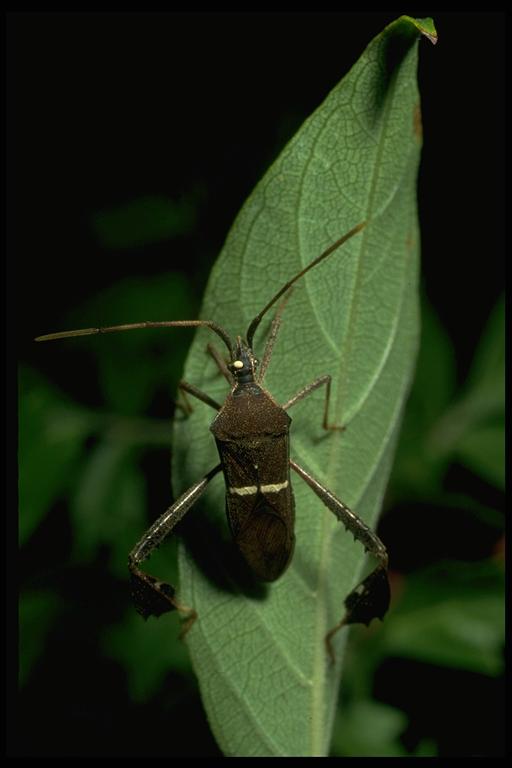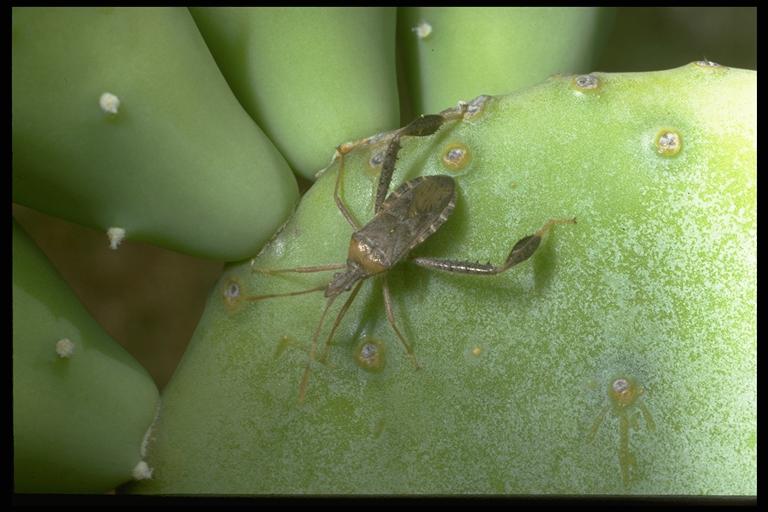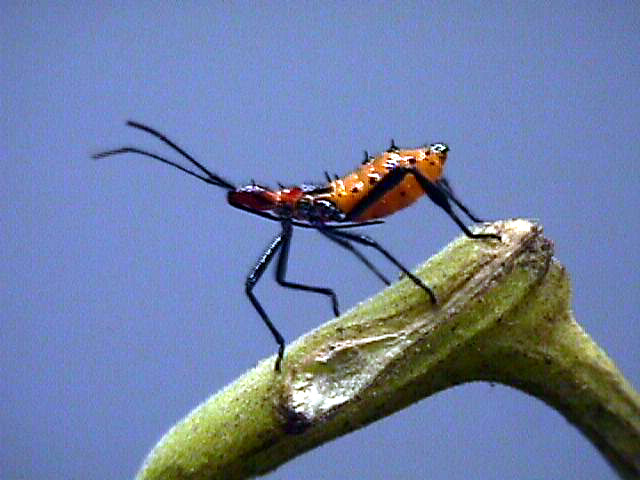
Leaffooted bug, Leptoglossus phyllopus (Linnaeus) (Hemiptera: Coreidae). Photo by Drees.
Common Name: Leaffooted bug
Scientific Name: Leptoglossus phyllopus (Linnaeus)
Order: Hemiptera
Family: Coreidae
Description: Adults are about 3/4 inch in length and are dark brown with a whitish to yellowish stripe across the central part of the back. The hind legs have flattened, leaf-like expansions on the tibia. Nymphal stages look similar to adults except that they do not have fully developed wings.
A leaffooted bug in the genus Narnia is common on prickly pear cactus. Another species, Acanthocephala declivis (Say), is one of the largest true bugs in Texas, being over an inch in length as an adult. Adults are particularly active in the fall. Although some members of this group are predaceous, immature stages can be easily confused with assassin bugs (Reduviidae).
Broad-headed bugs (Alydidae) are similar to Coreidae, but the head is as wide at the widest portion of the throax. They grow to about 3/4 inch long and are yellow to dark brown. Immature stages remarkable resemble ants (Hymenoptera: Formicidae).

A leaffooted bug, Narnia sp. (Hemiptera: Coreidae), on prickly pear cactus. Photo by Drees.
Life cycle: Immature stages are gregarious, being found in high numbers on certain fruit where egg masses were laid.
Pest status: Plant feeder; has well developed scent glands and will emit distinctive odor when handled.
Habitat and Food Source(s), Damage: Leaffooted bugs feed on a wide variety of developing fruit, including cotton, peaches, and tomatoes, and seeds such as beans, black-eyed peas, and sorghum. They also feed on the stems and tender leaves of plants such as potatoes. Damage produced is similar to that produced by stink bugs.

Leaffooted bug, Leptoglossus phyllopus, (Hemiptera: Coreidae), nymph on tomato plant. Photo by Jackma
Literature: Borror et al. 1989; Slater and Baranowski 1978.